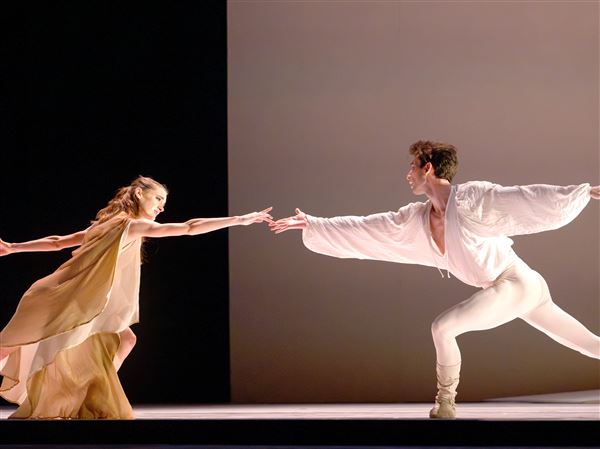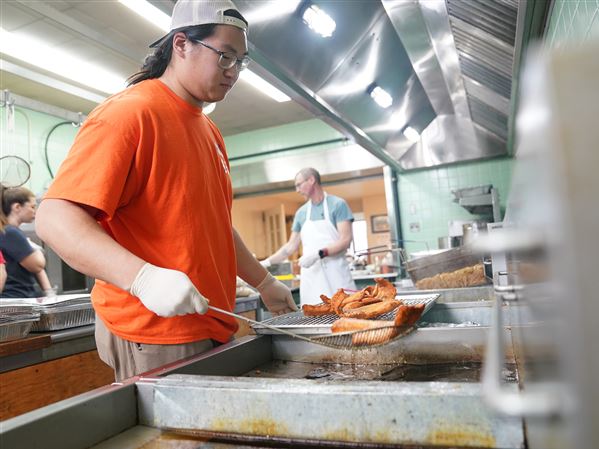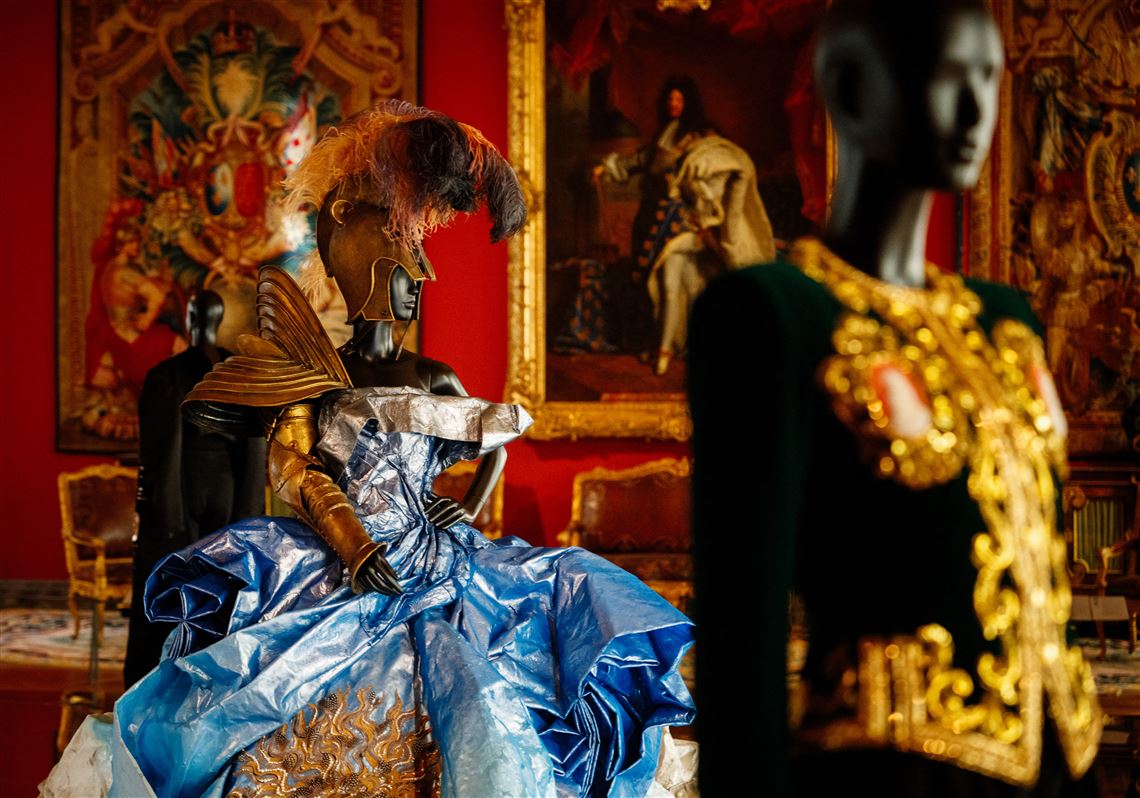PARIS — The world’s most visited art museum, the Louvre, is making history with its first exhibition on fashion since its creation 232 years ago.
“Louvre Couture - Art and Fashion: Statement Pieces” opened Jan. 24 in time for Paris Fashion Week with more than 100 couture pieces from dozens of the world’s top fashion houses, including Chanel, Hermès, Christian Dior, Jonathan Anderson, Iris van Herpen and Balenciaga.
With this exhibition, Olivier Gabet, director of the Louvre Museum’s Department of Decorative Arts, invites visitors to take a fresh look at its collections through the lens of contemporary haute couture designers, with a whirlwind tour through Byzantium, the Middle Ages, the Renaissance and the Second Empire.
“Museums house knowledge but also enjoyment and delight,” Gabet said.
Gabet’s lighthearted curation places the spotlight on the convergence of haute couture and art in this exhibition, which runs through July 21.
“The Louvre is a giant mood board, an inexhaustible source of reference and inspiration,” Gabet said. “As Paul Cézanne once said, ‘The Louvre is the book from which we learn to read.’”
With 8.7 million visitors in 2024 (averaging nearly 30,000 per day), the Louvre doesn’t need more visitors, but new ones.
“Fashion is very accessible, with no preconceptions. We all wear clothes. We all understand the meaning of a coat or a dress. We’re using this accessibility to lead visitors towards other works,” Gabet continued. “This is the idea behind the mood board, because art is present in couture.”
This dialogue between masterpieces of contemporary couture and masterpieces of antiquity offers the visitor a fresh perspective.
The seed for the exhibition was sown in 2009, when Pierre Bergé auctioned the collection of 733 art masterpieces that he and Yves Saint Laurent had jointly amassed over their 40 years together.
“As a museum curator, my background is in history and decorative arts, not fashion, but the more I delved into Yves Saint Laurent’s biography, the more I realized how much he had in common with Coco Chanel, Karl Lagerfeld, Jeanne Lanvin and Elsa Schiaparelli. They all shared an intense relationship with art and collecting. At that point, the societal impact of fashion began to intrigue me,” Gabet said.
Sometimes a designer’s inspiration is evoked subtly: Italian Renaissance for Christian Dior’s Maria Grazia Chiuri (a frequent Louvre visitor), suits of armor for Demna at Balenciaga, reliquary busts for Daniel Roseberry for Schiaparelli, Palissy ware for Matthieu Blazy and Alexander McQueen, medieval tapestry for Dries Van Noten, and its craftsmanship for Christian Louboutin.
For others, it’s more literal. Lagerfeld’s obsession with the 18th century is well documented. For his last Chanel haute couture collection in 2019 — the year of his death — he attached a photo of Mathieu Criaerd’s blue and white lacquered chest of drawers to his sketch with indications to Maison Lesage to reproduce it in embroidery on the jacket.
“This was a wonderful find from Chanel’s archives!” Gabet said. “It illustrates what I call the genealogy of taste, and this is exactly what we’re trying to illustrate through this exhibition.”
In the exhibit, Jean-Charles de Castelbajac’s Bambi tapestry miniskirt tailleur, accessorized with a fake-fur antler headdress from his “Go! Go! Diva” fall-winter 2010 collection, is displayed against the deer-hunting backdrop of “Le Mois d’Août,” one of a dozen medieval tapestries from 1528.
“Having the full suite of twelve 16th-century tapestries is rarissime,” Gabet said. “That is the beauty of the Louvre, when a 6-meter-wide piece of art is on display, you have the room to focus on it, without being distracted by other objects placed too closely. That’s the signature of the Louvre.”
“There’s nothing more beautiful than the encounter between a source of antiquity and a futuristic conduit,” de Castelbajac said. “That’s how I create, how I re-create.”
In the exhibition, Roseberry’s black wool suit worn with a handcrafted patinated brass mask for Schiaparelli, Jonathan Anderson’s sky-blue metal-studded top with copper wings, and Iris van Herpen’s 3D Cathedral dress in laser-cut copper stand shoulder to shoulder before a tapestry paying homage to Dante.
“Museums are soothing, restful places,” said Van Noten, who has three pieces in the exhibition. “One is often surrounded by absolute beauty, sorely needed in today’s world.”
Van Noten grew up in Antwerp, Belgium, where members of his family were drapers. His men’s overcoat is printed with an adaptation of a 17th-century Flemish tapestry depicting Moses being rescued from the waters. It stands in front of a silk and wool tapestry from the Manufacture des Gobelins dated 1689.
The pièce de résistance that encapsulates “Louvre Couture’s” concept is the set that unites two black silk-velvet ceremonial robes of the Order of the Holy Spirit, lavishly embroidered with real gold and silver, which are the only garments in the Louvre’s collections. The order was established by King Henry III in the 16th century and then abolished by King Louis Philippe in 1830, who returned the objects to the Louvre.
The robes are surrounded by three gold and black contemporary creations by Roseberry for Schiaparelli, Olivier Rousteing for Balmain, and Dolce & Gabbana’s Alta Sartoria.
The plaque of the order was a prestigious honor bestowed upon members of the French nobility. The star-shaped design was embellished with diamonds and the fleur-de-lis emblem of the French monarchy. In the centerpiece of this display is the version Lagerfeld created for Chanel in 1990, replacing the diamonds with rhinestones.
The sumptuously decorated 19th-century red velvet and gilt Napoleon III Apartments provide the backdrop for the spectacular, sculptural, black-bonded velvet ball gown from Demna’s Balenciaga 2020 spring-summer collection.
“Ball gowns take us back to the early days of Balenciaga, when Cristóbal started designing in Spain,” Demna explained in the exhibition’s catalogue. “He drew this type of silhouette, inspired by Spanish paintings. But we wanted to make sure they were wearable dresses. If you remove the crinoline, you are left with a kind of gothic dress.”
A few weeks after the appearance of this piece on the runway, Demna announced Balenciaga’s return to haute couture.
Equally at home in the Napoleon III Apartments is John Galliano’s crimson embroidered moiré and velvet ball gown with ermine trim for Christian Dior’s fall-winter 2004 haute couture collection, inspired by the movie “Sissi: The Young Empress.”
“There is no set itinerary to follow,” Gabet said. “We wanted the exhibition to be a fluid, leisurely promenade, a kind of timeout for our visitors, just as it allows us to use fashion as a bridge to discovering our collections.”
First Published: January 31, 2025, 10:30 a.m.
















